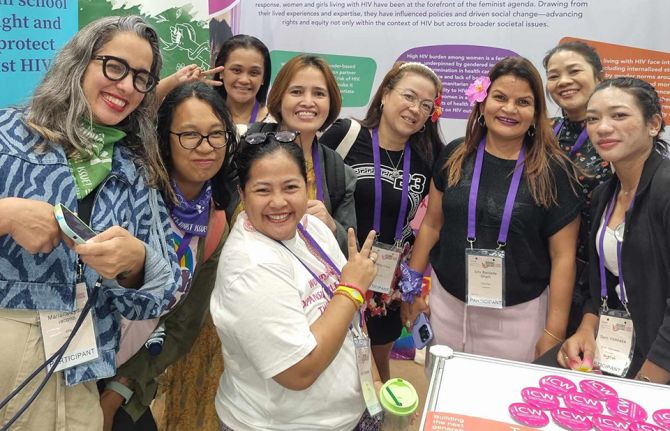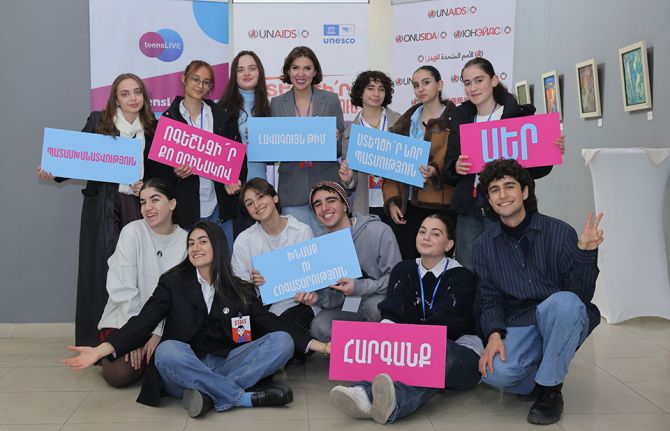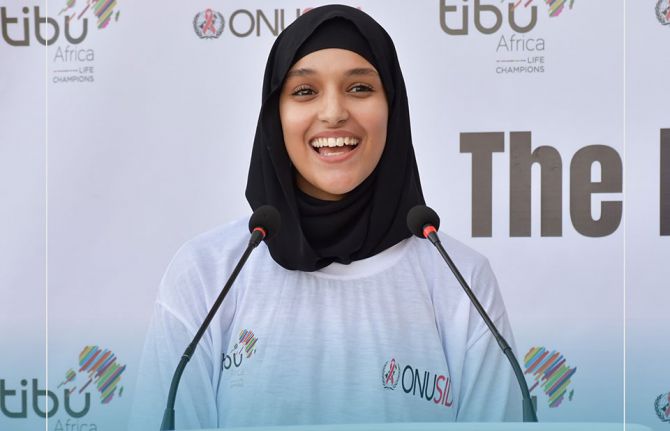
Feature Story
Human Rights Day - Partnering with men to stop human rights violations against women
10 December 2009
10 December 2009 10 December 2009A version of this story was first published at www.unfpa.org

This portrait of father and son from El Salvador is one of 38 images depicting positive images in the “Influential Men photography exhibit”
Credit: David Isaksson
It should have been one of the happiest nights of their lives. A young soldier and his new wife were alone for the first time on their wedding night. Much to the husband’s surprise, there was no blood after they consummated the marriage. They knew the kind of danger this result could bring if anyone found out. Elder women from the village would want to see the sheets, and if there was no blood, the young bride could be hurt, or even killed, for tarnishing her family’s honour.
It is not women or men working alone to end gender-based violence that yields the best results. Rather, it is the partnerships between them that have the greatest impact and reach.
Thea Fierens, UNFPA regional director for Eastern Europe and Central Asia
But several months earlier, the soldier had participated in a training session on sexual and reproductive health, gender equality and the prevention of gender-based violence. He learned that a woman can be a virgin and not bleed during intercourse, and that there may be more to a woman’s honour than her virginity. The soldier cut his finger and let it bleed onto the sheets to save his wife from danger.
The soldier reported this story to the trainers, and it trickled up to the leadership in the Ministry of Health, the Turkish Armed Forces and the United Nations Population Fund (UNFPA). It has stayed with them as a reminder that just one day of education can change – and perhaps save – a person’s life.

Comprehensive training on reproductive health for the Turkish Armed Forces is one of the programmes described in the new publication, Partnering with men to end gender-based violence
Credit Nezih Tavlas
The training session was part of an ambitious effort to educate every young man in Turkey on the importance of sexual and reproductive health, gender equality and the prevention of gender-based violence. It was organized by UNFPA, in partnership with the Ministry of Health and the Turkish Armed Forces.
With no formal curriculum in schools on sexual health, the training was the first time many soldiers learned how to use a condom or gave thought to gender-based violence. To date, 3 million men have been trained, and the project has been made permanent by a decree from the Turkish Armed Forces. Many of the soldiers say the training changed their beliefs about a woman’s right to make her own choices and to live free from violence.
The story is from one of five case studies featured in a new UNFPA publication, Partnering with Men to End Gender-based Violence: Practices that work from Eastern Europe and Central Asia. Other studies document experience in working with non-governmental organisations in the Ukraine, communities in Armenia, institutions in Romania and police officers in Turkey. The studies provide a step-by-step analysis of how projects to address gender-based violence were carried out and the process through which they were implemented.

“If there is one key lesson to be learned from these case studies, it is the value of partnership between men and women,” says Thea Fierens, UNFPA regional director for Eastern Europe and Central Asia. “It is not women or men working alone to end gender-based violence that yields the best results. Rather, it is the partnerships between them that have the greatest impact and reach. Each case study, in its own way, exemplifies this point, and provides a portal – even if only a small one – into what a world free from violence would look like.”
For UNAIDS stopping violence against women and girls is an issue of major concern and has been highlighted as one of nine priority areas outlined in the UNAIDS Outcome Framework 2009-11.
Alongside the featured publication, UNFPA has commissioned an exhibition of photographs, entitled ‘Influential men’, which highlights the power of positive male role models. It aims to raise awareness of the importance of including and engaging men and boys in creating a world in which every individual is treated with dignity and respect.
Click here to view a photo gallery of the exhibition.
Human Rights Day - Partnering with men to stop hu
Cosponsors:
Press centre:
Feature stories:
UNFPA report: Exploring links between HIV and climate change (18 November 2009)
Violence against women and HIV (10 November 2009)
Empowering women to protect themselves: Promoting the female condom in Zimbabwe (29 October 2009)
UNAIDS partners in new Clinton Global Initiative to address sexual violence against girls (25 September 2009)
Commission on the Status of Women opens with call for action to achieve universal access and gender equality (02 March 2009)
Challenging violence against women a key task for newly launched Caribbean Coalition on Women, Girls and AIDS (06 March 2009)
Publications:
Partnering with Men to End Gender-based Violence: Practices that work from Eastern Europe and Central Asia (pdf, 1.75 Mb.)
Women and Health: Today’s Evidence, Tomorrow’s Agenda
UNAIDS Outcome framework 2009-11 (pdf, 396 Kb.)
2008 Delegates Guide to Women and AIDS: All Women, All Rights (pdf, 506 Kb.)
An Analysis of the Gender Policies of the Three Major AIDS Financing Institutions: The Global Fund to Fight AIDS, Tuberculosis and Malaria, the World Bank and the President’s Emergency Plan for AIDS Relief (July 2008) (pdf, 150 kb)



